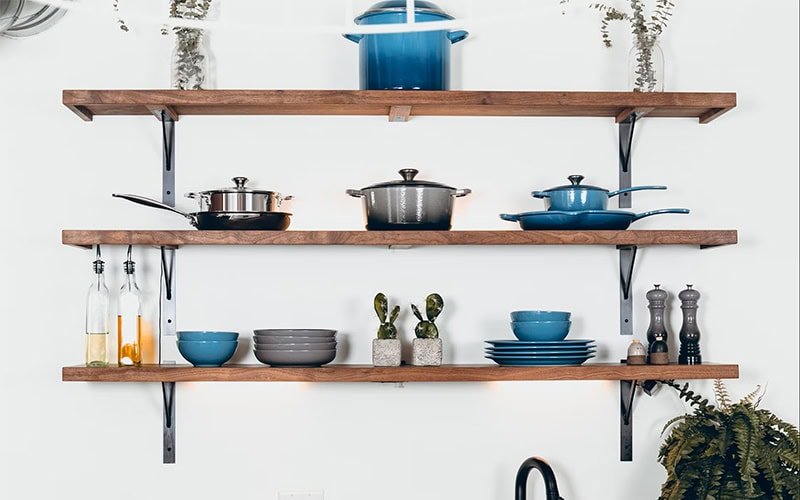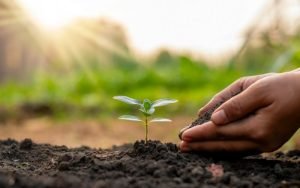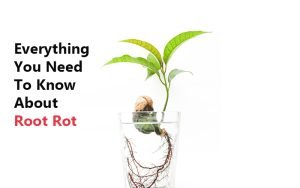Container gardening is great for those who are short on space and don’t want that to stop them from satiating their gardening appetite. It gives you the freedom to move your plants around and take advantage of that tiny patch of sunlight that enters your home.
You can grow anything from flowers, decorative plants, fruits, and vegetables in a container. So what are you waiting for, here’s everything you need to know about container gardening.
Container Gardening Pots
Since containers make ‘Container Gardening’ possible, you cannot overlook the type and the size of containers you need for a luscious garden. Your container can’t be too large or too small for the plants. A good rule of thumb is that the pot needs to be around half the size of the plant. Anything too tall or short would mean that it’s time to change the pot.
We have written about container gardening pots in detail in Flower Container Gardening For Beginners. Feel free to check it out.
Vegetable Container Gardening for Beginners
Firstly, can you grow vegetables in a container? Well yes! Of course yes! As long as you can provide all the right conditions, you can grow any vegetable you want.
Here are certain things you must keep in mind if you want to grow vegetables in a pot:
The Type Of Soil
Unlike garden plants, the roots of container plants cannot wander off to where they receive water and nutrition. They must get it from within the pot, hence using high-quality nourishing soil is very important for vegetable container gardening.
Although some vegetable plants prefer acidic soils while others prefer alkaline soils you must make sure that the soil is well-draining. You can use a combination of garden soil and sand, but make sure you add perlite and a highly nutritious fertilizer in the mix. The ratios depend heavily on the type of vegetable you grow.
Buy Perlite Now!
Although you may not need perlite in the garden, potted plants undertake a lot of pressure from the soil that compresses every time you add more water on top of it. Adding pearlite will protect the roots against the pressure.
Additionally, a watering can that sprinkles the water over the pot without putting too much pressure on the soil can protect the roots as well. We talk about gardening tools in greater detail in our article, 10 best gardening tools for beginners. Feel free to check it out.
Lastly, while you may need to add a fertilizer once every 6 months for garden-grown vegetables, if you want your container-grown vegetables to grow big and lush, add a fertilizer every 3 months. Container plants lose a lot of nutrition through the drainage holes made at the bottom of the plant. Replenishing the soil more frequently will take care of that.
Check out these Fertilizers
Sunlight Exposure
Most vegetables need at least 6 to 8 hours of sunlight which is why we don’t prefer to grow vegetables indoors. More often than not, indoor vegetable plants, if they survive, will not give fruits. If they do give fruits, they will not be good for harvest. If you want a functional vegetable plant you should keep it in the garden for maximum sunlight exposure.
But of course, just like anything else in nature, there are a few exceptions to this rule. Most leafy greens like spinach, kale, and lettuce, and root vegetables like carrots and beetroot grow well under a shade. They still need to be kept outside, so a place near an open window or under a taller plant will optimize their growth.
Best Vegetables For Container Gardening
Although you can grow just about anything in a container, some beginner-friendly vegetables grow in containers without causing too much fuzz. Herbs like basil, parsley, and mint don’t need a lot of upkeep and can be grown by anyone. Other vegetables like tomatoes and radishes are excellent beginner-friendly vegetables.
Cheap Container Gardening Ideas
The fact that you must change pots often and replenish your soil with fertilizer seems daunting. But fear not, container gardening can be as cheap as it can get. The first rule of thumb is to go for a low-maintenance plant, one that can grow pretty much anywhere and on most soils and temperatures, once you have that, the type of container you choose for the plant won’t matter to you.
You can make your containers using cardboard boxes, heavy-duty dustbin bags, and tape. The whole project will cost you less than $1 per container.
In fact, you don’t need to spend a lot on containers even for seedlings. Disposable cups work amazingly well for seedlings. After all, since they only need to be in a small cup for a small period of time, you shouldn’t spend a lot on starter containers. Do make sure however, to use food-grade plastic containers especially if you are growing edibles. This will protect you from having plastic seep into your plants.
Fertilizers
As for fertilizers, if you want to grow your garden on a budget, you don’t have to use a store-bought fertilizer frequently. You can make your own fertilizer with kitchen scraps. Not all of them require you to wait for weeks before you can use them on your plants.
Oats and tea leaves make for a quick and easy fertilizer. Simply empty out 1 teabag and 1 spoon of oats (measurements don’t matter) and add a cup of hot water. Soak the mixture overnight and strain it out. The water is a nitrogen-packed solution that will work as an excellent fertilizer for your plants. And just like this, there are many more natural fertilizers that you can make from things in your kitchen. We will have more on this in our future articles.
Conclusion
So here’s everything you need to know about container gardening. Remember, that it is not as complicated as it sounds. All you need is a container, a few seeds (or baby plants), and a potting mix and you’re ready to get started.
Growing your fruits and vegetables in a pot gives a sense of accomplishment that comes from no other activity. We hope you give container gardening a try and tell us what you think of it.























